Built For Life
PPAI’s 2016 Consumer Study Reinforces The Influence, Clout And Muscle Of Promotional Products
Consumers like promotional products. Consumers keep promotional products. Consumers have spoken and they praise promotional products as the leading advertising vehicle for brands.
Those are some of the key messages coming out of PPAI’s latest groundbreaking study of consumers, conducted in September 2016 and fielded through Survey Sampling International with more than 1,000 consumers participating.
In 2015, promotional products shared almost seven percent of the advertising market in the U.S. alone, at $21 billion; however, the medium is ranked highest by consumers across all generations as the most effective advertising vehicle. These findings also reinforced the results of previous consumer surveys by pointing out that promotional products innately possess the qualities consumers value and are built to succeed across the board in reach, recall, resonance and reaction performance metrics.
Key Study Highlights
- Eighty-nine percent of consumers surveyed had received a promotional product in the past six months, which indicates an upward trend over previous years when a consumer study was conducted: 2012, 73 percent; 2004, 71 percent; 1999, 72 percent; 1992, 62 percent.
- Promotional products have the highest advertising reach above any other form of advertising providing exposure each day. In fact, five in 10 consumers polled stated they come in contact with promotional products most of the time or at all times per day.
- Nearly nine in 10 recipients are able to remember the branding and eight in 10 can recall messaging from at least one promotional product they received.
- Eight in 10 consumers revealed that their impression of a brand positively changed directly as a result of receiving a promotional product from the brand.
- Roughly eight in 10 admit to looking up the brand after receiving a promotional product and 83 percent said they are more likely to do business with brands from which they’ve received promotional products than with brands they have not.
- When asked to rate which advertising vehicles provide consumers with an incentive to take action, promotional products were regarded as most effective by all generations.
Who Took The Survey?
- 43% Millennials
- 35% Gen Xers
- 19% Baby Boomers
- 3% Silent Generation
50% men/50% women
The Five R’s Of Promotional Products
In 1992, PPAI launched a pioneering series of consumer studies as the industry’s first assessment of the role of promotional products within consumer lifestyle and behavior. While previous studies are commonly identified as airport intercepts, the 2016 Consumer Study is the first quantitative analysis of its kind. This new methodology expands upon previous findings and is designed to better measure the performance of promotional products among consumers to enhance our understanding of their role as an advertising channel. Five key metrics were used to assess the value and weight of options used by survey respondents to respond to each promotional product component: Reach, Recall, Resonance, Reaction and Relativity.
Reach - Do promotional products elevate brand reach to deliver adequate exposure to recipients?
Recall – Do promotional products produce high brand recall to generate recipient awareness of the brand?
Resonance – Do promotional products enhance brand resonance to transfer a favorable attitude to recipients?
Reaction – Do promotional products stimulate reaction to influence change in recipient buying behavior?
Relativity – Do promotional products gain relativity against other advertising channels to satisfy recipients?
Reach
The power of promotional products cannot be underestimated as it drives an undisputed level of brand exposure. Promotional products not only reach their target audience, but they also provide opportunities to reinforce branding and messaging with increased frequency across multiple measurement platforms.
Frequency Of Exposure
The majority of consumers are exposed to promotional products most of the time each day; however, one third of Millennials said they are in contact with a promotional product at all times.
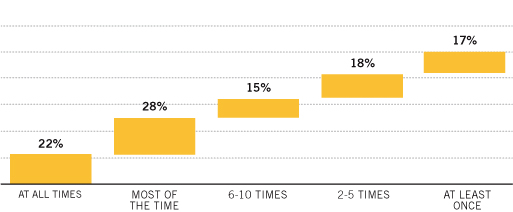
Length Of Exposure
The longer a promotional product is kept, the more impressions it makes on the recipient and anyone else who is exposed to the recipient using the product. The majority of consumers keep a promotional product between one and five years. Women may keep a promotional product up to 10 years, whereas men may keep a promotional product for 11 or more years.
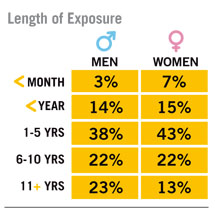
Range Of Exposure
Eight in 10 consumers choose to pass along a promotional product if they don’t keep it for themselves, which ultimately furthers the brand’s reach. On average, five in 10 will pass on a promotional product to someone else. Roughly four in 10 will pass promotional products on when they are finished using them.

*Categories are weighted and may not equal 100%.
Recall
When prompted with an unaided question, 83 percent said they recalled at least one brand and 23 percent recalled at least one message from a promotional product they received; however, if aided (or given options), nine in 10 on average correctly recalled branding, and eight in 10 recalled messaging characteristics, which indicates that consumers are not always aware they are being advertised to when given promotional products.
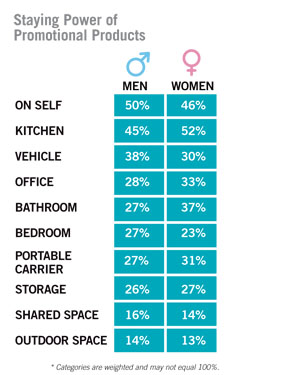
Attention To Detail
Branding has everything to do with identity: who you are and what kind of products and services you represent. Successful messaging then creates a voice for brands to connect with their target audiences and create a memorable consumer experience. The call to action then directs recipients to take action, thus enabling brands to directly interact and engage with consumers, capturing a response rate and measuring quantifiable results. Promotional products effectively deliver high recall between all three strategic advertising objectives.
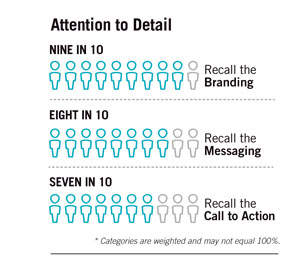
So what type of ‘call’ best resonates with each generation? Millennials best recalled social media, and Generation Xers best recalled directional calls to action, or statements with definitive instructions. Baby Boomers best recalled points of reference such as website domains or contact information.
The Staying Power Of Promotional Products
Promotional products allow brands to directly affect consumer lifestyles and maximize recall by organically integrating into everyday routines at work, home or play. Where promotional products are kept also indicates emerging product trends for brands to consider. Promotional products used in the kitchen and carried on one’s person are ideal for promoting to a general audience. However, if the target audience is gender-specific, one might consider particular product categories within that segment. For example, one might consider promotional products used in vehicles for men (e.g. car charger) versus a product generally kept in the bathroom for women (e.g. nail file). Interestingly, one in two respondents said they walk around with a promotional product such as a wearable item or a pocket product.
Resonance
Master marketer Seth Godin recently remarked, “It is impossible to market at people any more. The only choice is to market with them.” Advertising that creates resonance helps consumers to identify with the brand on a personal level and provides the foundation for an enduring brand relationship. Promotional products are proven vehicles for brands to generate a more favorable impression across all consumer audiences.
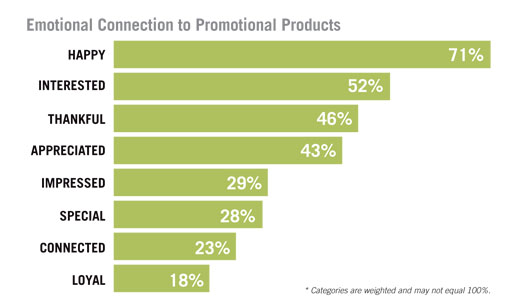
Emotions are at the heart of the relationship between brands and consumers as they steer conscious decisions and drive unconscious decisions. In fact, according to a 2015 Nielsen Consumer Neuroscience Internal Study, advertising that produced the best emotional response generated a 23-percent lift in sales volume. These study findings magnify promotional products’ capacity to elicit a strong emotional connection.
Understanding why an individual chooses to keep a promotional product received provides key insight into which features are most valued by recipients. Unlike traditional advertising vehicles whose sole purpose is to communicate a message, promotional products not only bring value to brands by effectively connecting with recipients but they also play a functional role within recipients’ lifestyles.
10 Reasons Recipients Own Promotional Products
Promotional products prominently display advertising, but they are found to be useful to a majority of consumers including a stunning 92 percent of the Silent Generation. Among Millennials, 48 percent said they kept promotional products because the design fit their style and/or personality, and both Generation X (42 percent) and Baby Boomers (48 percent) said the product was enjoyable to have.
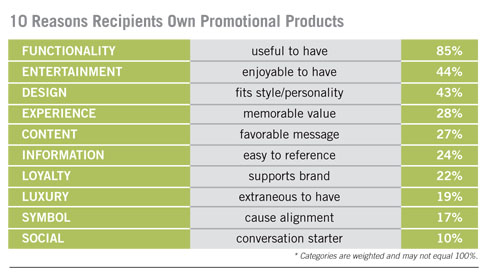
Advertising is designed to challenge consumer perceptions of a brand, and 82 percent of consumers agreed that their impression of a brand positively changed as a direct result of receiving a promotional product.
Reaction
“We don’t want people to buy a brand, we want people to buy into a brand, to make it part of their lives,” Stan Richards, founder of The Richards Group, once said. Advertising channels are the most important tool used by brands to reach a targeted audience, ensure that it resonates positively so that, most importantly, it generates the desired reaction. Promotional products are the optimal source to elicit a strong connection with recipients, spark interest, inspire action and effectively gain and retain consumers, ultimately enhancing brand loyalty.
Brand Allure
Roughly eight in 10 consumers said they have looked up a brand after receiving a promotional product. Promotional products drove the most interest among Millennial recipients, 87 percent of whom were curious enough to take further action.
Brand Favorability
With the overwhelming selection of brands today’s marketplace offers, the average consumer might appear more elusive or erratic than ever in their decision-making. However, one might argue that the right advertising vehicle has the power to shift brand favorability and ultimately influence a consumer’s buying decisions—and that’s exactly the case. In fact, 88 percent of Millennials said they are more likely to do business with brands from which they received promotional products over other brands.
Brand Loyalty
Results indicate that consumers who receive promotional products are more likely to increase loyalty to the brand.

Relativity
Brands are presented with an endless stream of opportunities to deliver their message, so how each option compares becomes essential when marketers are weighing where to invest advertising dollars. Compared with more traditional advertising vehicles, consumers confirm promotional products as the leading choice for brands.
Ideal Advertising Qualities
It is important to understand the wants and needs of a consumer in order for an advertising vehicle to be successfully received. When asked what advertising qualities (not limited to promotional products) were important to them, the majority of survey respondents preferred visually appealing ads that clearly deliver a message. Promotional products are built to do just that with their physical and tangible features.

Most Effective Advertising Channel
When asked to rate which advertising vehicles provide consumers with an incentive to take action, promotional products were regarded as most effective by all generations.
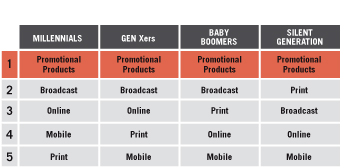
Best Received Advertising Vehicle
Today’s consumers are exposed to an expanding, fragmented array of touch points; however, there’s a growing sensitivity to the idea that consumers are trained to be blind to advertising. The market for consumer awareness has become so competitive that attention can be regarded as a currency in the world of advertising. The rising cost of this element is reason enough for brands to consider their return on investment, such as which ad vehicles have a higher probability of being received by consumers. Data show that promotional products are the least avoided by consumers than any other advertising vehicle.
Best Received Advertising Vehicle Based On Percentage Of People Who:
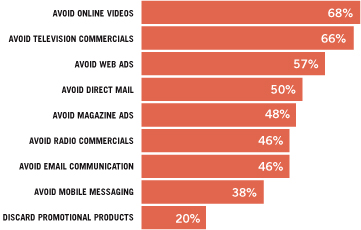
*Categories are weighted and may not equal 100%.
Moumita Das is market research coordinator for PPAI. For more exclusive PPAI Research, visit www.ppai.org/research.
Access a PDF of this article here.

